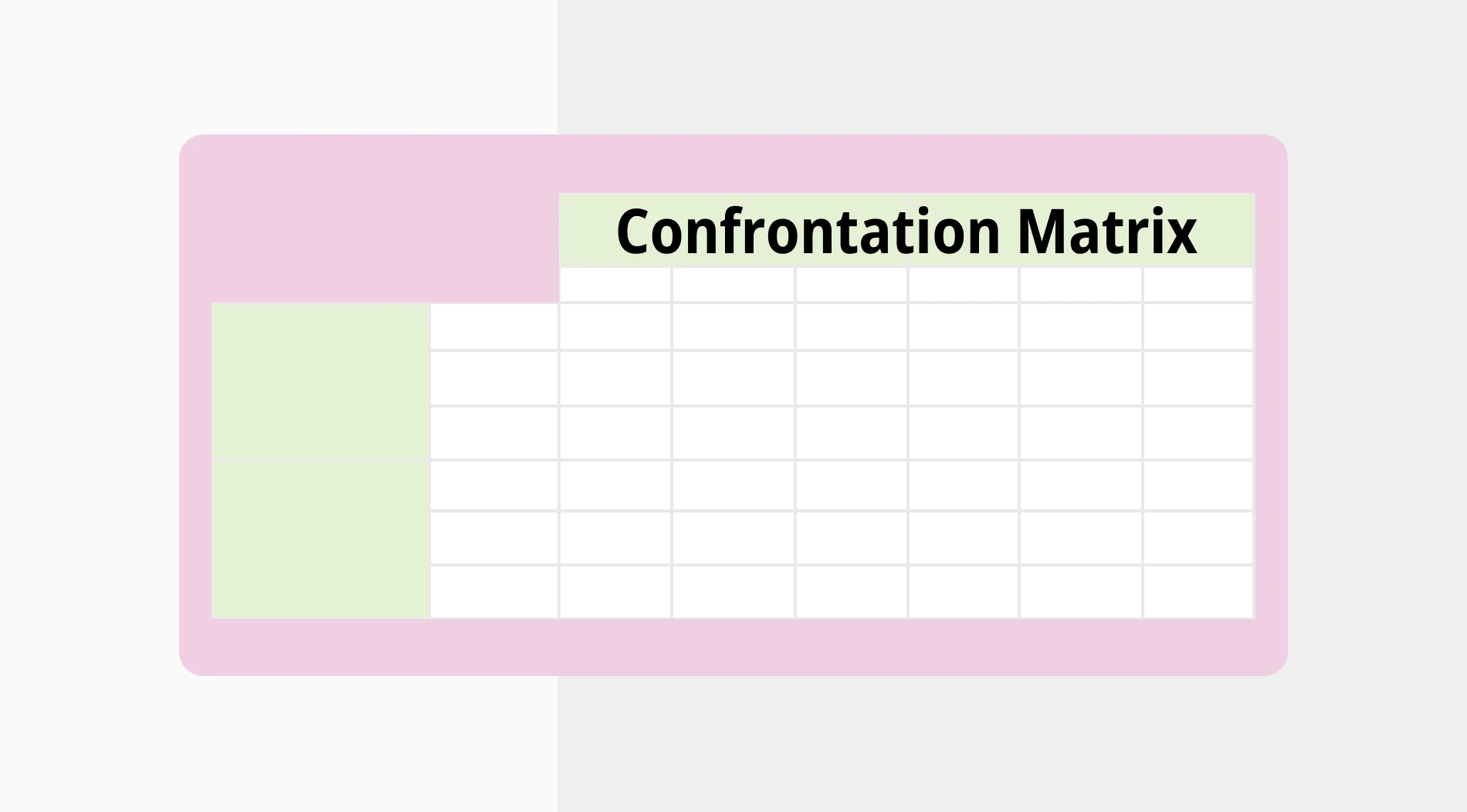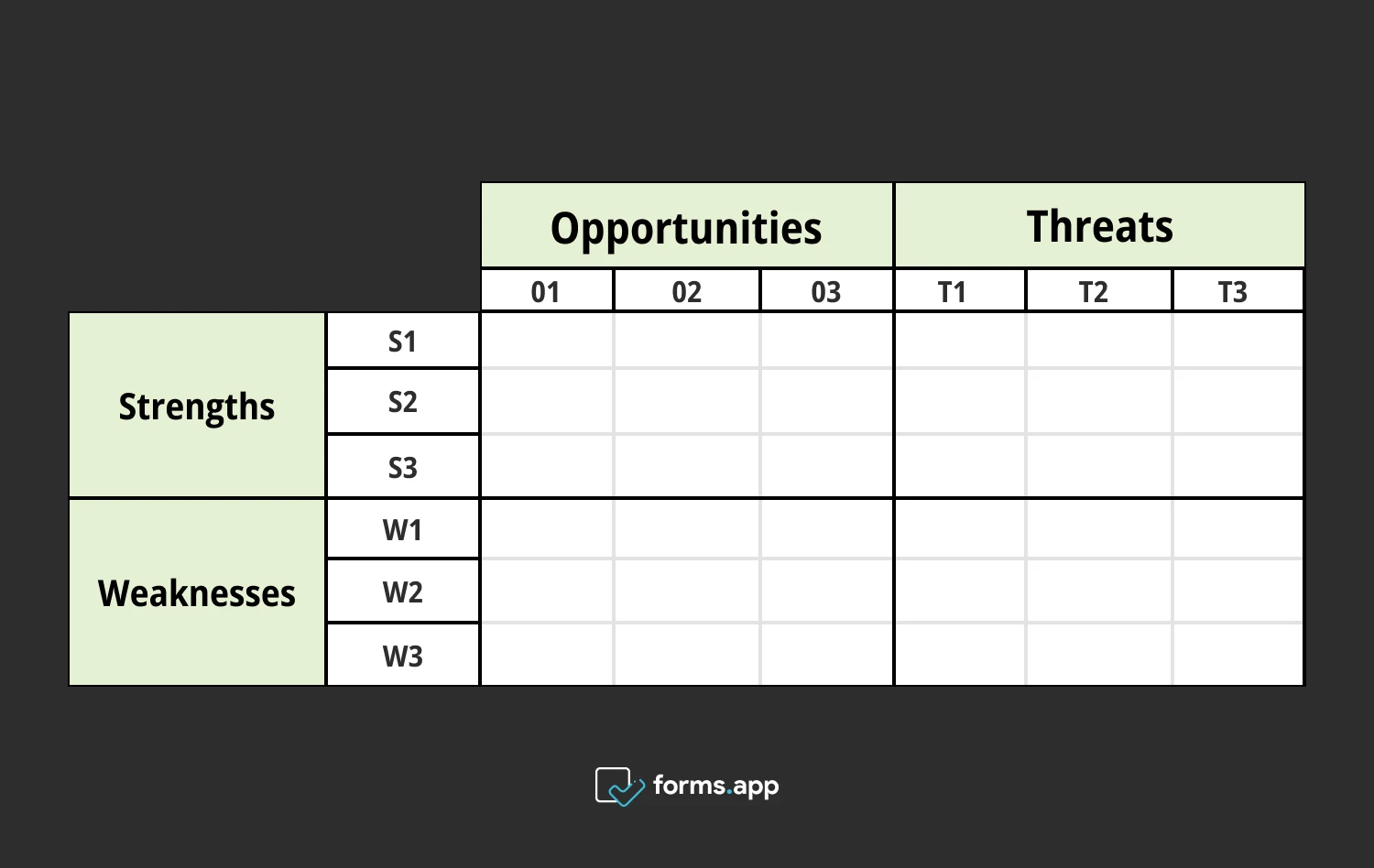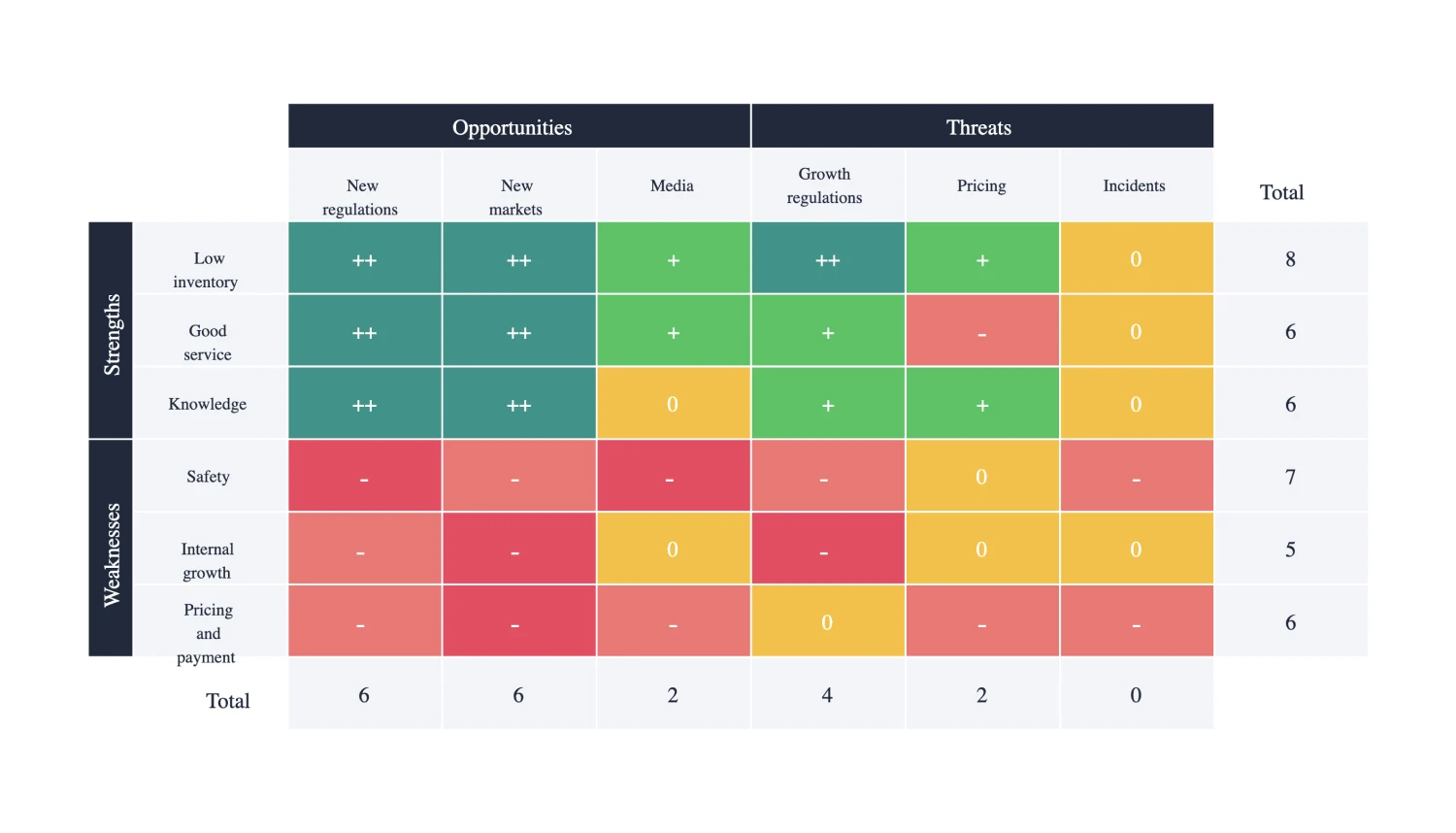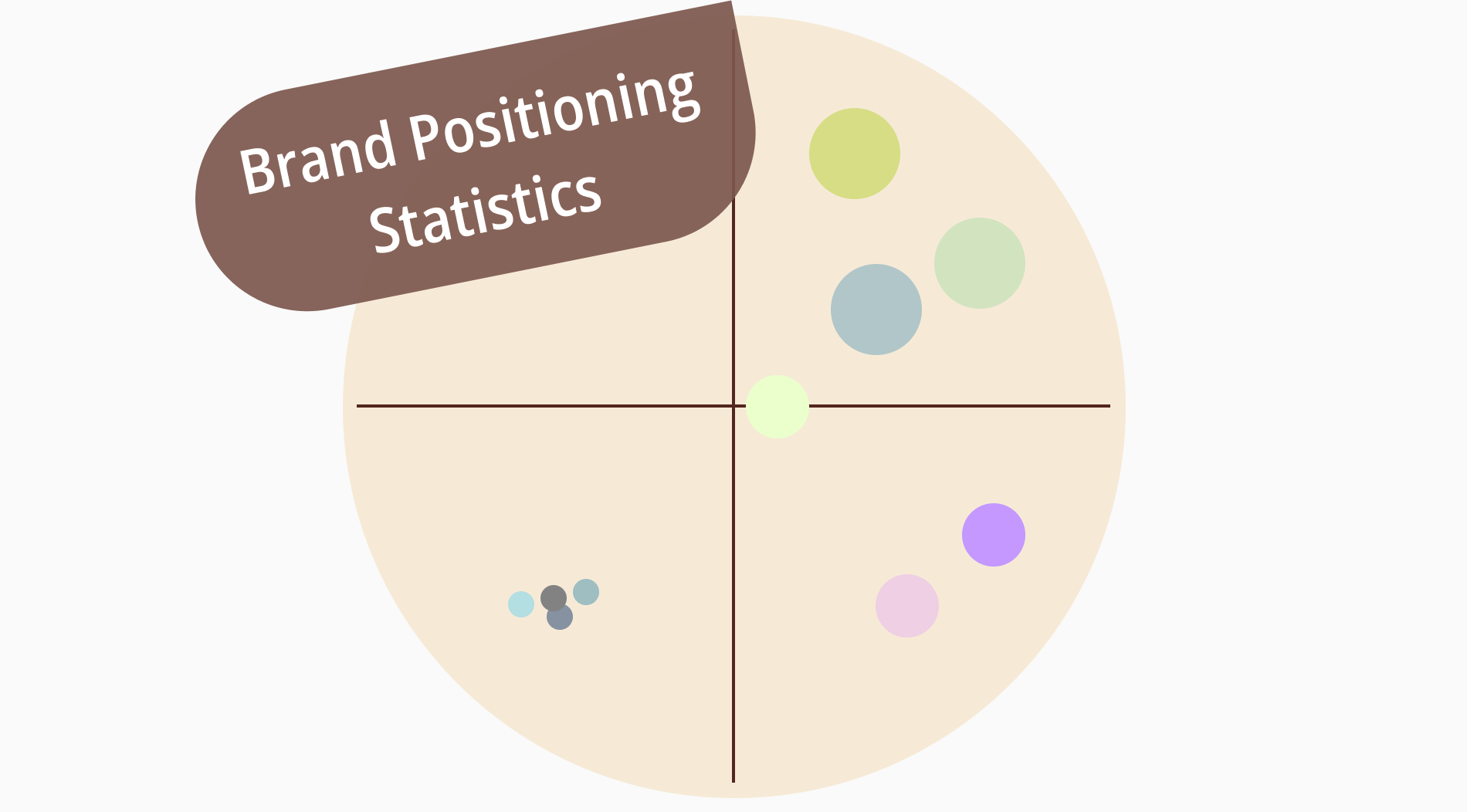
When business is involved, people look for a number of strategies to best achieve their objectives, and the confrontation matrix is one of the many. Being a combination of the SWOT Analysis (Strengths, Weaknesses, Opportunities, Threats), the confrontation matrix gives you an insightful view of the pros and cons, ups and downs of your business.
In this article, we examine this tool in detail, explaining why you may want to apply it to your business and, if so, how you can achieve it. We also give you the structure of the confrontation matrix to visually depict the interaction between internal and external factors—which are represented by SWOT—affecting your business.
What is the confrontation matrix?

The confrontation matrix, a component of the SWOT Analysis, is a strategic tool for comparing internal and external factors, in other words, “confronting” the strong and weak points with opportunities and threats to develop a good business strategy.
This would also help with creating an effective marketing plan for your business.
Why do you need the confrontation matrix?
Due to being a valuable systematic tool, the confrontation matrix can help you to work through all the different options resulted from a SWOT or TOWS analysis to the point. Businesses can use the SWOT confrontation matrix to generate the best strategy for their organisation. It also gives people the opportunity to brainstorm and decide on the important options ensuring that everyone’s opinion is on the table.
The confrontation matrix: Explained
The confrontation matrix is to help you identify your strengths and weak points on a micro level and connect them to the opportunities and threats on a macro level. This tool comes with four key strategies to make a note of. These are Growth Strategy, Defence Strategy, Improvement Strategy, and Retreat/Change Strategy. Below, we explain these strategies with examples.
1. Growth strategy
The growth strategy is based on the strengths and opportunities (SO). It is about leveraging the organization’s strengths to profit from external opportunities. You can use this strategy to expand and grow your business. Let’s take a look at the example below:
Opportunity: Growing demand for sustainable clothes
Strength: Research and development capabilities
Strategy: Developing a marketing strategy with a new line of ecological clothes to meet the increasing customer demand for sustainable garments
2. Defence strategy
The defence strategy is based on the strengths and threats (ST). It is about building a strategy to protect against these threats by using the strengths of your organization and mitigating the negative impact that these threats could bring to your business. Let’s see the example:
Threat: Intense competition in the market
Strength: Strong brand reputation and customer flow
Strategy: Enhance customer loyalty programs to retain existing customers and gain new ones
3. Improvement strategy
The improvement strategy is linked to weaknesses and opportunities (WO) in the organization. This strategy helps your business turn these weaknesses into strengths and better exploit the opportunities in the market. Let’s have a look at the example below:
Opportunity: Expanding your business into a new area
Weakness: Unknown customer profile and limited network
Strategy: Conduct a marketing research survey and invest in building a robust distribution network, and search for potential partnerships to serve the market
4. Retreat/Change strategy
The retreat (also known as change) strategy is related to the weaknesses and threats (WT). This strategy is about making significant changes to improve and defend the business against these threats. Let’s see the example below:
Threat: Constant development in technology making current products obsolete
Weakness: Lack of innovation in business
Strategy: Conduct thorough research on the latest advancements in technology, invest in new technology development, and focus on long-term innovation
Considering the above examples and details in using these four key strategies, you should also remember to look at your SWOT analysis details. The input you receive from the SWOT analysis will help you develop the points that are linked to weaknesses and threats, which will eventually improve your business.
How to use the confrontation matrix in business
As we explained above, the confrontation matrix and the SWOT analysis work together hand-in-hand. Following a SWOT analysis, the input you receive will be a guide for your confrontation matrix. The outcome usually results in 3 critical elements in each quadrant representing the Strengths, Weaknesses, Opportunities, and Threats. Let’s see an example of a confrontation matrix template:

How to use the confrontation matrix in business

💡You can create your own template or use an existing one on Creately.
To be able to use the confrontation matrix in your business, you should first conduct a SWOT Analysis, construct the confrontation matrix, analyze interactions, develop strategic actions, develop strategic actions, prioritize actions, implement the strategies, monitor, and review. Take a look at our step-by-step guide below:
1. Conduct a SWOT Analysis: Identify the strengths and weaknesses as internal factors and opportunities and threats as external factors.
2. Construct the confrontation matrix: Create a grid with internal factors on one axis, and external factors on the other axis.
3. Analyse interactions: Evaluate how each internal factor interacts with each external factor.
4. Develop strategic actions: Create 4 strategic actions, including growth strategy (SO), defence strategy (ST), improvement strategy (WO), and retreat strategy (WT).
5. Prioritise actions: Evaluate the impact and feasibility of each strategic action. Prioritize these actions based on their level of importance.
6. Implement the strategies: Following the prioritized actions, develop detailed action plans. Allocate resources and set timelines for implementation.
7. Monitor and review: Monitor the progress of the strategies. Revise and make adjustments where applicable.
Examples of the confrontation matrix
So far, we have explained what the confrontation matrix is and how you can implement this in your business. Here, we demonstrate a confrontation matrix example to better picture what yours would look like. Below, you can see both internal factors (vertical) and external factors (horizontal). The colors represent the positive, negative, or no impact.
You can have a look at the example template of Creately:

Examples of the confrontation matrix
Final words
Being a part of the SWOT analysis, the confrontation matrix provides insights into the effective factors, potential risks, and opportunities that your business may experience. In this article, we provide you with the details of the strategies, examples, and explanations to better build and advance your business by defending against threats, making the most of the opportunities, and thriving in the market.
The confrontation matrix is here to help you formulate better marketing strategies and increase the potential growth and success of your business. You can use these strategies to best position your business in the competitive market and reach your highest potential in business.
Elif enjoys sharing her expertise through helpful guidelines and tips about marketing and business planning. She is also a linguist who has a deep interest in maps, history, culture, and languages.



 5 min ler
5 min ler

